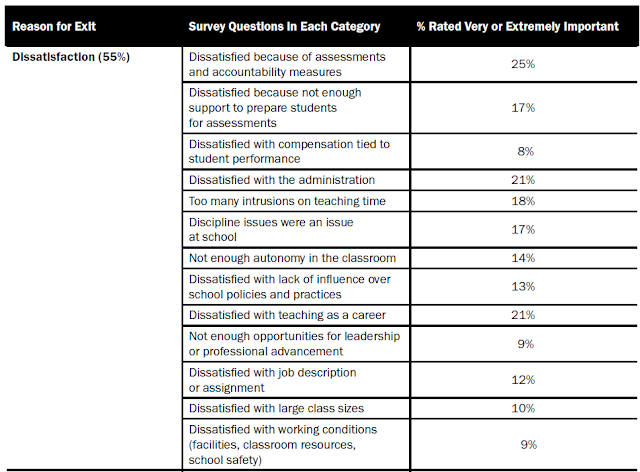Why Teachers Quit
A recent report from the Learning Policy Institute, "A coming crisis in teaching? Teacher supply, demand, and shortages in the U.S.", projects a shortage of about 100,000 teachers by 2018. Worse, the shortages are not uniform across the country. The South is already experiencing severe shortages while Massachusetts still has a surplus. The needs also vary with subject. The demand for teachers for mathematics, science, special education and English language learners runs above the supply in most states. Worse, schools that need teachers the most, schools that teach poor students, are often the first ones to suffer. One big reason behind this shortage, according to the report, is the significant number of teachers quitting.
3 million teachers in US public schools. Thus, a leaving rate of 8% corresponds to 240,000 teachers quitting every year. One can easily compare this with the number of persons who have completed a teacher preparation program for example in the year 2014, only 180,000. Clearly, more individuals are leaving than entering the profession.
The report does not stop at supply and demand. It also has a survey of the reasons why teachers leave.
3 million teachers in US public schools. Thus, a leaving rate of 8% corresponds to 240,000 teachers quitting every year. One can easily compare this with the number of persons who have completed a teacher preparation program for example in the year 2014, only 180,000. Clearly, more individuals are leaving than entering the profession.
The report does not stop at supply and demand. It also has a survey of the reasons why teachers leave.



Comments
Post a Comment